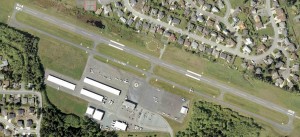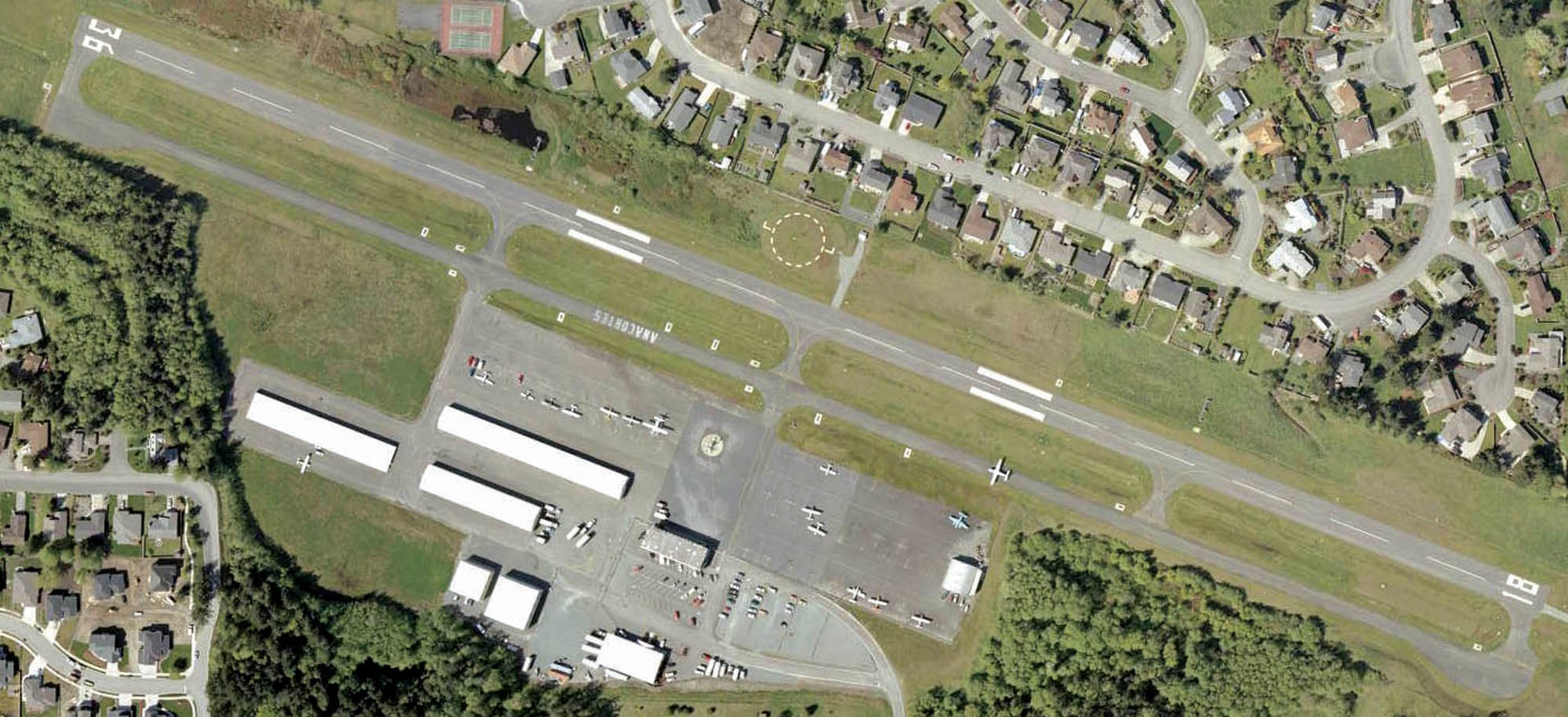By Terry Stephens

After attempts to close Anacortes Airport, the November 8 election transformed the Port of Anacortes Commission into a majority of airport supporters.
Anacortes Airport appears to be safe from threats of closure by the Port of Anacortes after a heated November election filled four vacant commission seats with a majority of airport supporters.
The whole port commission election, in fact, focused on the controversy over the airport’s future, which included such issues as the commission’s opposition to removing dangerous trees near the runway, antagonizing airport tenants and suggesting closing the airport to sell the 130-acre airfield to a Seattle developer for a 400-home housing development. Also, the commission had tried to orchestrate a November ballot measure for a public vote on whether to close and sell the airport. The commission hastily reversed that plan following stern letters from the Federal Aviation Administration and the Aircraft Owners and Pilots Association.
“This was the advisory vote,” said Bill Short, returning commissioner, who was reelected with 58 percent of the vote over his opponent, James Taylor. “I said in my meetings that if people don’t like the airport, they shouldn’t vote for me.”
Another airport supporter, Pat Mooney, picked up 61 percent of the ballots to defeat Brian Wetcher, who had been outspoken against the airport operations. Newcomer Keith Rubin, a vocal critic of the past port commission, was elected with 52 percent of the vote to fill a seat previously held by airport opponent Chuck Mallery.
Commissioner Ray Niver, one of three commissioners opposed to the airport, held his position with only a 600-plus-vote lead over challenger Anni Brogan, a write-in candidate who spent $13,000 to launch an aggressive campaign against Niver after his opponent dropped out too late for Brogan to get her name on the ballot.
Commission President Steve Hopley, whose term expires Dec. 31, 2007, was the only one of the five board members who didn’t have to run in this year’s election. He wasn’t part of the Niver, Mallery and Wetcher alliance that opposed the operation of the airfield.
Brogan, a vice president and flight test director for Micro AeroDynamics at Anacortes Airport, said the furor over the airport began four years ago with complaints from residents near the airfield.
“Then the anti-airport group won a majority of seats on the port commission with a goal of stopping any economic development around the airport, even trying to ignore the FAA and Washington State Aviation Division requirements for maintaining the airport. They didn’t realize we’re part of the national air transportation system,” said Brogan, who also is a pilot and president of the Washington chapter of AOPA.
The airport issues came to a head, she said, when commissioners began talking about closing the airport, followed by Commissioner Niver’s meeting with a Seattle developer and a subsequent proposal that the commission sell the airport to make way for a housing development.
Hearing talk about closing the airport and that the commission was contemplating selling the property spurred the FAA to write a letter to the executive director of the Port of Anacortes, expressing the federal agency’s adamant opposition to closing grant-obligated airports such as Anacortes. When the FAA wrote a stern warning to the commission that it shouldn’t try to close the airport, Brogan said Niver charged the FAA with “intimidating” voters with its letter.
Bill Dunn, AOPA vice president of airports, sent a strongly worded letter to commissioners noting that the airport is under federal grant obligations and that making a vote on its future is inappropriate. He added, “Any ballot measure put forth contemplating airport closure, binding or not, in addition to being an unnecessary waste of scarce airport and taxpayer funds, conflicts directly with the contract the port has with the federal government.”
Dunn said suggestions of “intimidation” are “ludicrous and absurd.”
“The FAA has been directed by the U.S. Congress and federal statute to protect the federal investment in airports that have received federal funding,” he wrote. “Anacortes Airport clearly fits into this category.”
With the combined voices of AOPA, local pilots and the FAA raised against a plan to hold a vote on closing Anacortes Airport, the commissioners reversed their vote and abandoned the idea. Even the local chamber of commerce weighed in, releasing an official position statement saying it wants to see the airport remain open.
“When I found out Niver would be unopposed in the election, I began an aggressive write-in campaign,” Brogan said. “As someone who is a neighbor of the airport and works there, I just wasn’t going to take this any longer.”
She also had been watching developments at nearby Blaine Airport, where a local developer wanted to close that 40-acre airfield to use it for industrial development. That question did make the November ballot for an advisory vote and a slim majority voted to close it, leaving city officials to contemplate a feasibility study of the issue.
She came close in her bid to win Niver’s seat, garnering support from the business community, residents and both the local daily and weekly newspapers. Although she lost her bid for the commission, Brogan believes the election helped people realize the importance of Anacortes Airport.
Short said the anti-airport sentiment on the commission had also blocked a developer from building hangars at the airfield, in violation of FAA regulations. Stalling by the commission in cutting down trees that were dangerous to flight operations put the port in court, Short said, costing the community $500,000 in legal fees.
“What we’re trying to do, first of all, is get people to recognize that the FAA has stated the airport is going to stay, accept it and then run the port in a business-like fashion,” Short said during his campaign. “It would have cost $50,000 to put the (closure) issue on the ballot but when the FAA said ‘no way’ and the public uproar opposed it, the commission backed down.”
He said people “don’t realize how important the airport is for so many things, including people living in the San Juan Islands who use it.” He said one-third of Anacortes hospital patients come from islands with no ferry service or have emergencies and can’t wait for the ferries.
Simply informing the community about the size and significance of Anacortes Airport will have impact, he believes. According to the port commission website (www.portofanacortes.com), the airfield is suited for a major role in Northwest aviation, with a 3,018-foot asphalt runway, parking and tie-downs for 69 aircraft, and a development of 39 hangars.
After the election, Short said he thinks the new commission will provide “for much more rational handling of airport issues and be more airport friendly.”











